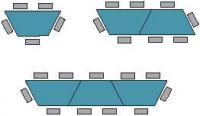1st September
Monday is day 1
Homework
Notices:
Attitude
All shook up
Reminders: Camp Adair
Signed
Wednesday 30 August 2017
WALTS- Describe the physical appearance of our animal (Refer to first paragraph) Refer back to prior learning about character writing - MOSES BEACH
-Describe how it uses it's adaptations to survive..
Specific learning Intentions Yesterday:
-Use a comparison to help the reader relate to your animal..
-Use a hyphenated adjective before a noun (To paint a clear picture)
-Specific detail (tips of it's claws..... not just claws)
Tuesday 29 August 2017
Agenda Book
30th August
Tomorrow is Day 5
Homework:
Business Venture
Animal Adaptation Article
Notices:
School Dance
Reminders:
Signed:
Tomorrow is Day 5
Homework:
Business Venture
Animal Adaptation Article
Notices:
School Dance
Reminders:
Signed:
Monday 28 August 2017
Reflection: Business Venture
What's working well?
What obstacles are in your way?
How do you plan to overcome these?
What obstacles are in your way?
How do you plan to overcome these?
Vampire Finch - Adaption - Mini Inquiry
1. What/ Who is your animal? Where does it live?
2. Describe it's physical appearance
3. Describe it's adaptation (Physical or behavioural) that helps it survive in it's environment.
The Vampire Finch lives on Wolf Island. It is a small bird that survives in it's environment with the help of it's sharp beak. This sharp beak acts like a surgical tool. It has learned that the Red Footed Booby is the most reliable source of food and water around the island. In times of drought, these little Vampires relentlessly peck at the base of wing and tale feathers, with its beak, to meet their daily nutritional requirements.
Task: Choose an animal and complete a mini Inquiry about 1 of it's adaptation.
You might like to use the website below to find information
25 insane animal adaptations
EXTENSION: WRITE AN EXPLANATION
COMPARE AND CONTRAST, BY DESCRIBING THE DIFFERENCES BETWEEN THE RESPIRATORY SYSTEM FROM THAT OF A HUMAN TO A BIRD.
Sunday 27 August 2017
Agenda
28th August
Tomorrow is day 3
Homework:
Talk to your parents about some "non food" money making ventures
Noties:
School dance Thursday 7-9
Reminders:
Tech arts
camp Adair payments
Signed
Tomorrow is day 3
Homework:
Talk to your parents about some "non food" money making ventures
Noties:
School dance Thursday 7-9
Reminders:
Tech arts
camp Adair payments
Signed
Thursday 24 August 2017
Wednesday 23 August 2017
WWA - Adaption
Adaptation is an evolutionary process that
results in organisms being increasingly well suited to their habitat or
ecological niche.
ADAPTION
There are many types of adaptations, but
these can be classified into three main categories –structural, behavioural or
physiological:
·
Structural (or morphological)
adaptations are the physical features of the organism. These include things you
can see, like its shape or body covering, as well as its internal organisation.
·
Behavioural adaptations are
learned or inherited behaviours that help organisms to survive.
·
Physiological adaptations
relate to how an organism’s metabolism works. These adaptations enable the
organism to regulate their bodily functions, such as breathing and temperature,
and perform special functions like excreting chemicals as a defence mechanism.
Adaptation cards
For Each card, state whether it is Structural, behavioural or Physiological
|
Birds have different shaped beaks and
feet suited to the habitat they live in.
|
Kiwi hatch with an internal yolk sac.
This sustains the chick in its first week of life.
|
The bill of the takahē extends onto its
forehead as a shield.
|
|
If there is thick snow cover on the
ground during winter, takahē will nest in forested areas to provide shelter.
|
Kiwi have fine whiskers at the base of
their beak to aid their navigation in the dark.
|
The breeding cycle of kākāpō is tightly
linked with the fruiting of the rimu tree. In abundant fruiting years, more
chicks are often born.
|
|
Kererū are one of the few birds to produce
‘crop milk’ – a protein-rich milky secretion from the walls of their crops to
sustain their chicks.
|
Kiwi have nostrils at the ends of their
beaks
|
The kākāpō has a ‘freezing’ response to
danger.
|
|
Kererū fledglings spend 1–2 weeks with
their parents before becoming independent.
|
Kiwi plumage blends in with the
undergrowth to allow them protection from predators through camouflage.
|
The kererū has the widest gape of any New
Zealand forest bird. This enables it to swallow the large berries of native
trees.
|
|
Kiwi and takahē have vestigial wing buds,
which are incapable of flight.
|
Male kākāpō let out a ‘booming’ noise
from dug-out bowls in the earth to attract a female.
|
The tūī has a long curved beak and a fine
brush-tipped tongue that enables it to extract nectar from forest tree
flowers.
|
|
Kiwi are nocturnal birds.
|
Many birds such as the kererū and tūī
perform display dives to attract a mate.
|
Tūī have hollow bones and no teeth, which
makes their body light for flight.
|
Tuesday 22 August 2017
Adaptations
An adaptation is a mutation, or genetic change, that helps an organism, such as a plant or animal, survive in its environment. Due to the helpful nature of the mutation, it is passed down from one generation to the next. As more and more organisms inherit the mutation, the mutation becomes a typical part of the species. The mutation has become an adaptation.
Related Concepts:
Websites to help your mini Inquiry:
https://www.nationalgeographic.org/encyclopedia/adaptation/
http://learn.genetics.utah.edu/content/basics/mutation/
TASK:
Inquiry about an animal?
Create an Article about an animal that has adapted due to it's environment.
What is the animal
Describe what it looks like
What are it's adaptations (Why and how)
Related Concepts:
Key Concepts
- charles darwin
- natural selection
- evolution
- genetics
- speciation
- mutation
- adaptation
Websites to help your mini Inquiry:
https://www.nationalgeographic.org/encyclopedia/adaptation/
http://learn.genetics.utah.edu/content/basics/mutation/
TASK:
Inquiry about an animal?
Create an Article about an animal that has adapted due to it's environment.
What is the animal
Describe what it looks like
What are it's adaptations (Why and how)
Sunday 20 August 2017
Agenda
21 August
Tomorrow is day 2
Homework:
Finish Explanation on "Genes, Traits"
Reminders: $8 for Dumplings Investment (Due Thursday)
Notices:
Signed:
Tomorrow is day 2
Homework:
Finish Explanation on "Genes, Traits"
Reminders: $8 for Dumplings Investment (Due Thursday)
Notices:
Signed:
WWA
What Are Traits
What Are Genes
What is Inheritance
Listen / take notes on the above 3 Areas?
Can you explain what makes a person who they are?
What Are Genes
What is Inheritance
Listen / take notes on the above 3 Areas?
Can you explain what makes a person who they are?
Thursday 17 August 2017
Tuesday 15 August 2017
Room 7 Guidelines
Discussion
-Earphones
-White table
-Work in pairs
-After breaks
-Computer use
-Couch
-Earphones
-White table
-Work in pairs
-After breaks
-Computer use
-Couch
Agenda
16th August
Tomorrow is day 1
Homework:
Business Venture
Notices: Business Venture letter
Reminders: Year 9 Band
Signed
Tomorrow is day 1
Homework:
Business Venture
Notices: Business Venture letter
Reminders: Year 9 Band
Signed
Monday 14 August 2017
WWA
UOI5 - Who We Are - What are Genes and where do they come from?
Task:
In your UOI book draw and label images that represent what you learnt in today's video.
Some areas you may want to document:
- Cells
- DNA
- Genes
- Inheritance
- Chromosomes
- Cell Division
Key Question:
What do you think an SNP is?
Sunday 13 August 2017
Wednesday 9 August 2017
Monday 7 August 2017
Agenda
8th August
Tomorrow is info evening
Homework:
Finish Growing up sheet (Share with parents)
Notices:
Reminders: Info Evening (Full school Uniform)
Signed:
Sunday 6 August 2017
Algebra
Numeracy - Algebra - Pre Tasks - Monday 7th August 2017
The Table Problem

Funky Furniture sells tables that can be joined together for large meetings. Tables and chairs are set up this way.
If a line of 24 tables is set out like this, how many chairs will be needed? Can you give a rule for the number of chairs needed for any given number of tables?
The Fish Problem
With 26 matchsticks, you can make 4 fish in this pattern.
How many fish can you make with 140 matchsticks?
Write an equation that gives the rule for the number of matchsticks you need for a given number of fish.
Gallery Walk
UOI4 - Sharing The Planet - Gallery Walk

How to complete a Gallery Walk:
In pairs you will move around the room and look at each person's piece of work.
At each station you will add your thoughts to their rubric.
You will have 2 minutes at each station.
You will alternate between the following roles:
- Reporter - presents the group's thoughts on a question to the class.
- Recorder - writes group responses on poster sheets and prepares the written report out.
What else might we need to consider during this activity?
Wednesday 2 August 2017
Tuesday 1 August 2017
Conflict Videos
Ban the bag - Greenpeace
Sugar Tax - NZ
Sugar Tax - NZ
Jamie Oliver has taken aim at the New Zealand Government, calling their failure to tax sugary drinks a "bloody disgrace".
Speaking via video message to the annual FIZZ Symposium in Auckland, the celebrity chef says the Government is dismissing a move that is "logically, scientifically and economically justified".
"New Zealand, like Britain, has got some of the most obese children on the planet... It's disgusting," Oliver says.
"In New Zealand 26 percent of all sugar kids get is from sugary sweetened drinks.
"Anyone who could dispute this needs a slap."
Almost one in three Kiwi adults over the age of 15 are obese - the third highest rate in the OECD.
Oliver explains that Britain initially wasn't on board but after a long campaign, changed their minds.
"France is in, Portugal's in, Hungary's in, Ireland's in - this is the new norm, guys."
"Go and kick some arse from your Government. The fact they're not there is a bloody disgrace," he said.
The Government is not actively considering a sugar tax, but says it's monitoring the situation.
-What is the purpose?
-What makes this persuasive? Powerful? (any language features stick out here)
-Who is the intended audience?
Subscribe to:
Posts (Atom)



